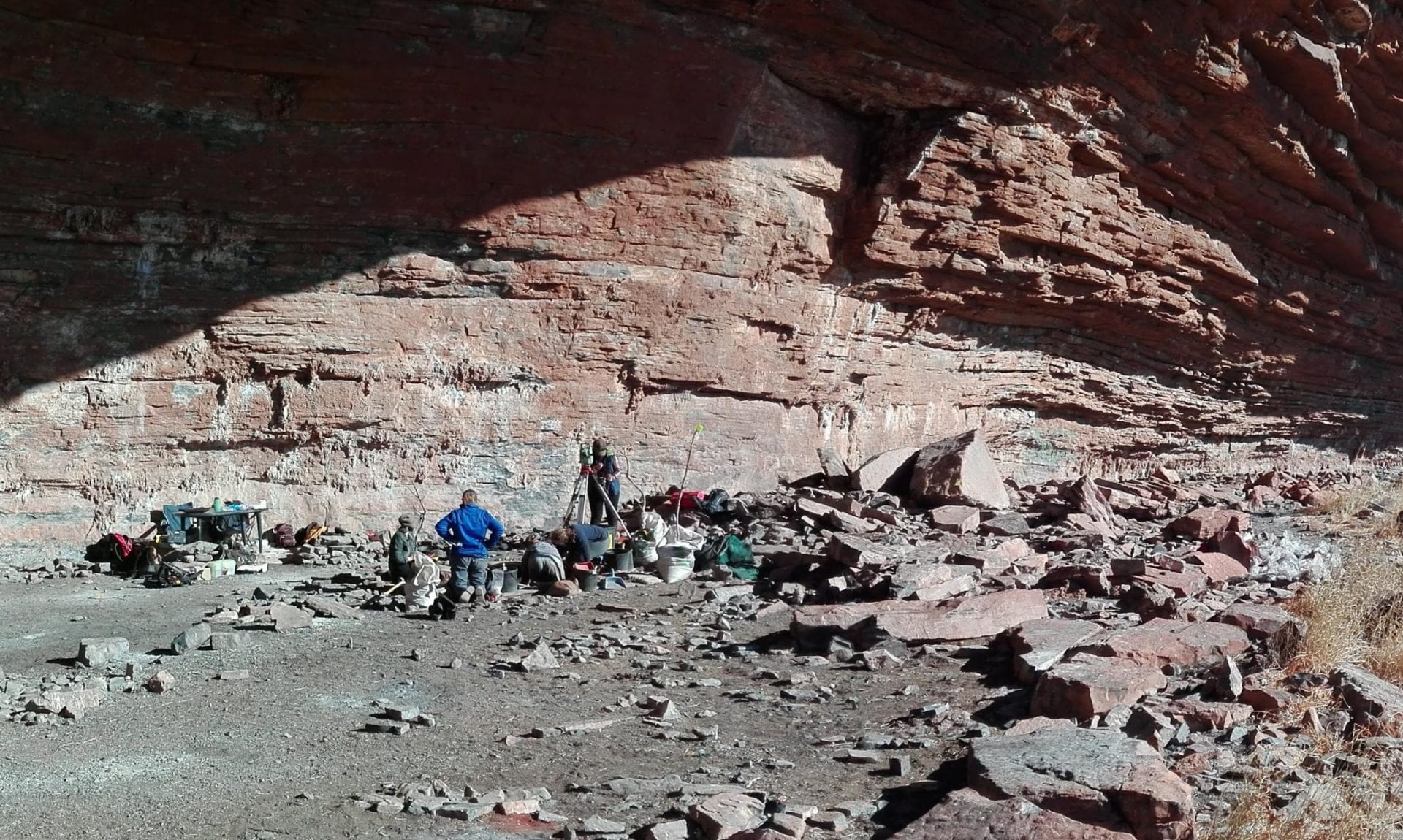Archaeological evidence found in a rock shelter is challenging the origins of our species linked to coastal environments.
Evidence for early Homo sapiens has mostly been discovered at coastal sites in South Africa, supporting the idea that our origins were solely linked to coastal environments.
Only a few dateable sites located in the interior have been able to give an insight into the homo sapiens’ origins away from the coast, such as the rock shelter on Ga-Mohana Hill that stands above an expansive savannah in the Kalahari.
A team of researches conducting studies within the rock shelter have excavated 22 white calcite crystals and fragments of ostrich eggshell (thought be used as water containers) from deposits dated to 105,000 years ago, significantly older than that reported in interior environments elsewhere.
“Our analysis indicates that the crystals were not introduced into the deposits via natural processes, but were deliberately collected objects likely linked to spiritual beliefs and ritual,” Dr Wilkins said.
The age of the archaeological layers was constrained via Optically Stimulated Luminescence (OSL) dating in the OSL laboratory at the Department of Geology at the University Innsbruck, Austria.
Dr Michael Meyer – head of the OSL Laboratory said: “This technique measures natural light signals that accumulate over time in sedimentary quartz and feldspar grains. You can think about each grain as a miniaturised clock, from which we can read out this natural light or luminescence signal, giving us the age of the archaeological sediment layers.”
The name Kalahari is derived from the Tswana word Kgala, meaning ‘great thirst’. And today the climate at Ga-Mohana is semi-arid, with little seasonal rainfall. However, ancient proof of abundant water on the landscape is evident from the abundant tufa formations around the shelter. These were aged using the uranium-thorium dating method to between 110,000 and 100,000 years ago – exactly the same time period as the people were living there.
“This is a story of water in what we know now as a dry landscape, and of adaptable people who exploited the landscape to not only survive but to thrive,” says Dr Robyn Pickering, who is director of the Human Evolution Research Institute (HERI) at the University of Cape Town.
Header Image Credit : Jayne Wilkins







